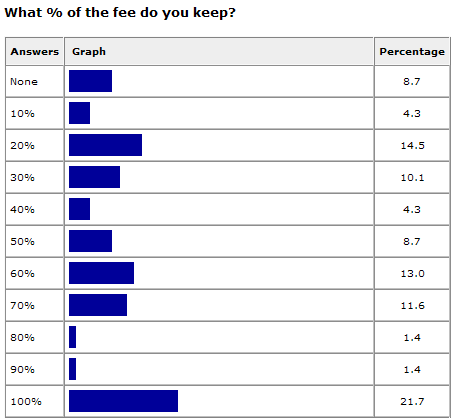
Teenage girls can gain excess weight due to hormones. However, with a few simple workouts, they can lose weight without sacrificing their enjoyment of exercise and remain active. Inverted V pipe, which exercises the legs and abs, is an example of such a workout. It improves flexibility, balance and stability as well as increasing metabolism. Participants should bend at their elbows, hold a piece of mat, and arch the back.
A great workout for girls is simple. You can run, walk, or do other activities. These activities help women maintain a healthy body and are great for boosting the metabolism and managing obesity. Walking is one of her favorite exercises. It can improve her heart health, digestion, and mental well-being. Weight training is another recommended exercise. Start slowly and increase your repetitions as you progress.

A complete abs workout for girls should last 45 minutes, with 15 seconds between exercises. HIIT for girls should be done 3 times per day, with at most 2 sets. Most of these workouts for girls are for women who want to tone their glutes and develop stronger midsections. These exercises should be done on a daily basis. It is also a good idea, to do some cardio every day.
Warm ups are an essential part of any workout. Warming up not only increases core body temperature, but also increases blood circulation, which is vital for muscle growth. Your muscles will benefit from more blood flow and oxygen. Training will become more effective and efficient. Warming up is essential, unlike with other exercises. Do a few reps with a bar or dumbbell set.
To achieve a toned abdomen, it takes hard work and dedication. In 30 days, girls can shed extra weight with an effective abs workout. Your teen's results will come quickly, you'll be amazed. Your teen will quickly see results if you keep her on track with her workouts. It's never too much to start! You will be surprised at how easy it is.

For girls who are interested in building muscle mass, you can find workouts that target specific muscles. These workouts will help a girl build lean muscle and increase her energy. A strong body can be a great asset to women. You should tailor your workouts to meet your goals. These can be done at home.
You can find an abs program for girls in the app store. The app is easy to use and will help you get a six-pack in just 30 days. It has detailed instructions and simple-to-follow animations. It's also free! You can also share it easily with your friends.
FAQ
How does weight change with age?
How can you find out if your weight has changed?
If there are less calories than muscle mass, then weight loss is possible. This means that the amount of calories consumed must exceed the amount of energy used daily. Low activity levels are the most common cause for weight loss. You can also lose weight due to stress, illness, pregnancy, hormonal imbalances and certain medications. Weight gain occurs when there is more fat than muscle mass. This happens when people consume more calories than they burn during the day. The most common causes are overeating, increased activity, hormonal changes, and excessive calories.
Our bodies lose weight because we eat fewer calories than we burn. When we exercise regularly, we increase our metabolism rate which burns off more calories throughout the day. However, this doesn't mean that we'll necessarily get thinner; what matters is whether or not we're losing fat or gaining muscle. If we're burning more calories that we consume, we'll lose weight. But if you consume more calories than you burn, you're actually storing them for fat.
As we age we tend to be slower in moving and thus we don't move nearly as much. We also tend to consume less food than when we were younger. As a result, we gain weight. We also tend to look larger because we have more muscle.
It's not possible to measure how much weight your body has lost without weighing yourself every week. There are many different ways to measure your weight. You can also measure your waist, hips or thighs. Some prefer to use bathroom scales, while others prefer tape measures.
If you want to track your progress, you should try weighing yourself once a week and measuring your waistline once a month. You can also take photographs of yourself every few years to track how far your progress has been.
You can also find out how much you weigh by looking up your height and weight online. You'd likely weigh 180 pounds if you were 5'10 tall and 180 pounds if you were 180lbs.
How to measure bodyfat?
A Body Fat Analyzer will give you the most accurate measurement of body fat. These devices are used for measuring the percentage of body fat in people who want to lose weight.
What's the problem with BMI?
BMI stands For Body Mass Index. This refers to the measurement of body fat using height and weight. BMI is calculated using the following formula:
Divide the weight in kilograms by the height in meters squared.
The result is expressed in a number between 0 - 25. A score of 18.5+ indicates that you are overweight. A score higher than 23 indicates that you are obese.
A person who is 100 kg in weight and 1.75m in height will have a 22 BMI.
What is the difference in fat and sugar?
Fat is an important energy source, which comes from food. Sugar is naturally found in fruits and veggies. Both fats, as well sugars, provide the same number calories. Fats however, have more calories than sugars.
Fats are stored within the body and can contribute to obesity. They may cause cholesterol buildup and lead to strokes or heart attacks.
Sugars are quickly absorbed by the body and provide instant energy. This causes blood glucose levels to rise. High blood glucose levels can lead to type II diabetes.
Statistics
- The Dietary Guidelines for Americans recommend keeping added sugar intake below 10% of your daily calorie intake, while the World Health Organization recommends slashing added sugars to 5% or less of your daily calories for optimal health (59Trusted (healthline.com)
- In both adults and children, the intake of free sugars should be reduced to less than 10% of total energy intake. (who.int)
- WHO recommends consuming less than 5% of total energy intake for additional health benefits. (who.int)
- This article received 11 testimonials and 86% of readers who voted found it helpful, earning it our reader-approved status. (wikihow.com)
External Links
How To
What does "vitamin" actually mean?
Vitamins are organic compounds found naturally in food. Vitamins aid us in absorbing nutrients from the food we eat. Vitamins cannot be made by the body; they must be taken from food.
There are two types vitamins: water soluble or fat soluble. Water-soluble vitamins dissolve in water easily. Examples include vitamin C,B1 (thiamine), B2 (riboflavin), B3 (niacin), B6 (pyridoxine), folic acid, biotin, pantothenic acid, and choline. The liver and fatty tissues are home to fat-soluble vitamins. Vitamin D, E, K and A are some examples.
Vitamins are classified according their biological activity. There are eight main groups of vitamins.
-
A - Vital for normal growth and maintaining good health.
-
C - essential for nerve function and energy generation.
-
D - essential for healthy bones, teeth, and gums.
-
E is necessary for good vision, reproduction.
-
K - required for healthy muscles and nerves.
-
P - vital for building strong bones andteeth.
-
Q - Aids in digestion and absorption.
-
R - necessary for making red blood cells.
The recommended daily intake (RDA), of vitamins varies with age, gender and physical condition. The U.S. Food and Drug Administration (FDA) sets the RDA values.
For example, the RDA for vitamin A is 400 micrograms per dayfor adults 19 years or older. For fetal development, pregnant women need 600 mg per day. Children ages 1-8 require 900 micrograms per day. Babies under one-year old require 700 mg per day. Between 9 and 12 years of age, however, this drops to 500 mg per day.
Children aged between 1-18 years require 800 micrograms of sugar per day, while overweight children need 1000 micrograms. Children who are underweight receive 1200 micrograms every day to meet their nutritional requirements.
Children ages 4-8 years who have been diagnosed with anemia need 2200 micrograms per day of vitamin C.
2000 micrograms daily is required for adults over 50 to maintain their general health. Breastfeeding or pregnant women require 3000 micrograms per daily due to higher nutrient demands.
Adults over 70 require 1500 micrograms each day, since they lose around 10% of their muscle mass every decade.
Women who are pregnant, nursing or breastfeeding need more than the RDA. Pregnant women need 4000 micrograms per dayduring pregnancy and 2500 micrograms per day after delivery. Breastfeeding mothers need to consume 5000 micrograms every day when breastmilk has been produced.